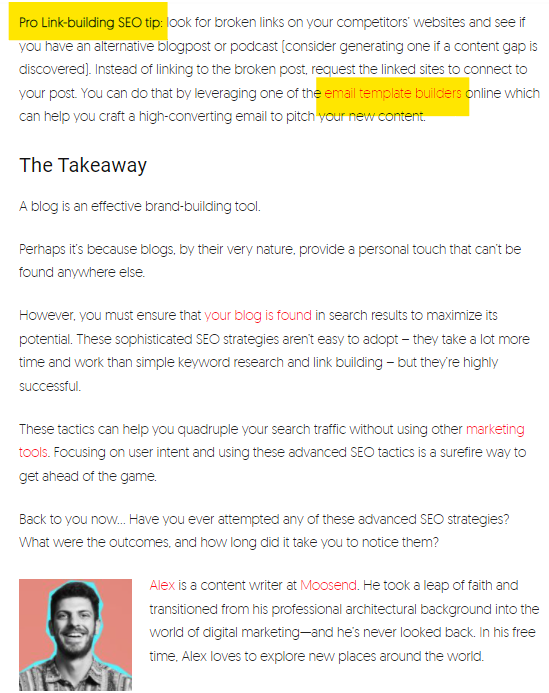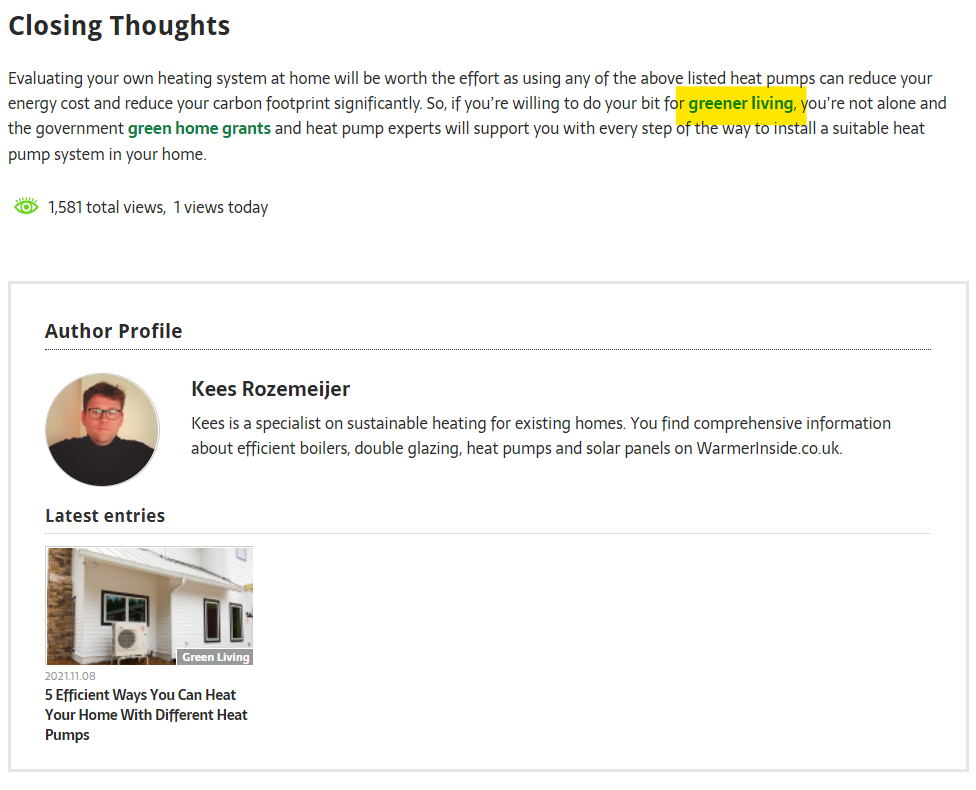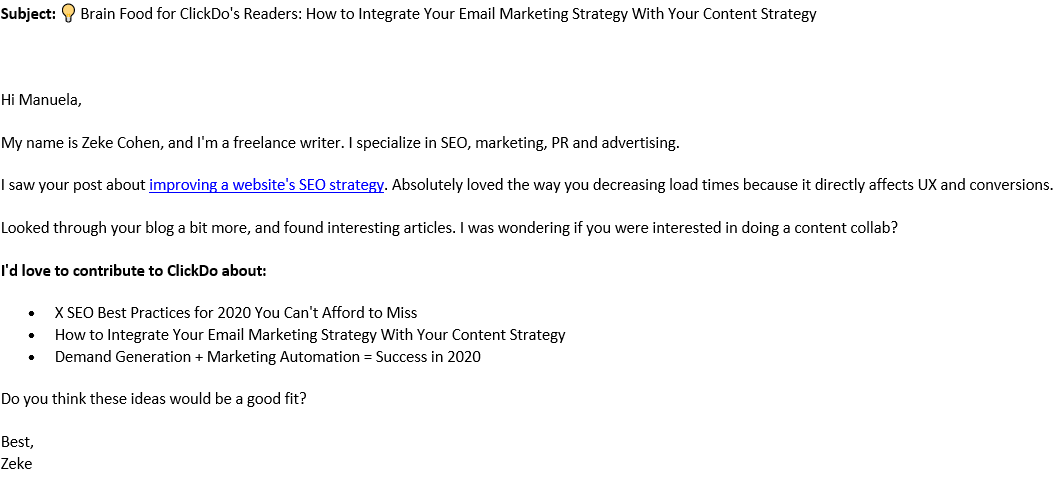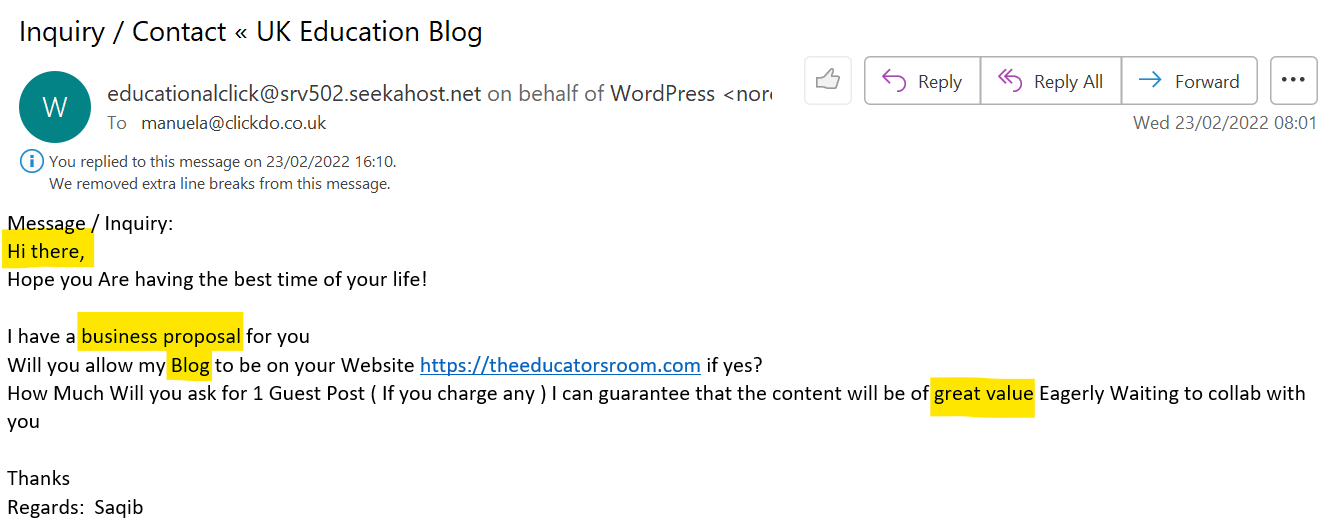Your Ultimate Guide to Guest Blogging & Guest Posting to Optimise SEO Marketing

As a copywriter/blogger, small business, or large corporation looking to garner gradually increasing levels of stature and notability surrounding the content you publish via your online platform:
‘Have you ever been curious about the processes involved in the accumulation of total article views and what makes those numbers soar?’
Pay close attention because exploring this inquisitorial line of questioning through an effective technique called ‘guest posting’ will prove valuable in gratifying your interests in building a brand and gaining more exposure as a business or a person.
Setting a cumulative stage on the online landscape for your work to gather increasing total views by the masses, guest posting has risen to become one of the best SEO practices for various websites, ranging from blog sites to online company platforms.
For instance, one of the biggest challenges online businesses face is getting their messages to potential leads, making it seemingly impossible for them to see their messaging manifest into something tangible – this is where guest posting comes in.
Guest posting can also help establish and build an online presence of any nature, be it for business or as a personal brand.
Take Tesla CEO Elon Musk, for example:
Elon Musk is the face of his company and frequently features in the media through his tweets, comments and activities, which influences his business success.
What is Guest Posting?
Essentially serving the purpose of progressively harnessing awareness to you &/or your cause, guest blogging also referred to as ‘guest posting’, is the act of an independent author writing content for another website under their name.
According to SEO expert Manuela Willbold,
“Guest blogging is as close as it comes to networking online for copywriters and at ClickDo Ltd. we use it constantly to grow our blogs.”
Generally, a guest blogger will write for similar blogs and online media outlets within their industry to attract traffic back to their website.
The Value & Benefits of Guest Posting & Guest Blogging
Having a successful guest post featured on a higher-ranking or esteemed website in your niche is a win-win for both the author and the online platform where the piece is published. In this way, the guest post fulfils the content needs of the publisher, in turn allowing the author to virtually piggyback on their platform.
Guest posts have the potential to offer a range of substantial opportunities and benefits to their authors, some of which include,
- Network Expansion: As your written material begins to permeate into other online platforms that may be unfamiliar with your brand, filtering your work through to their audience will raise your brand awareness, making the prospects of bolstering your online portfolio through guest posting tremendous.
- Establishing Credibility: Building trust with higher-ranking websites and online media outlets is the cornerstone of continual credibility for guest post providers. By streamlining your cause/purpose through the production of quality content fine-tuned for mass online consumption, your possibilities are endless, as the authority you steadily build will coincide with reaching increasingly higher readership numbers.
- Building Website Traffic: When it comes to employing successful guest post practices, site visits are crucial to your cause – and the numbers don’t lie. Given the considerably invaluable nature of websites without traffic, it’s pivotal to have your content displayed on other sites to ensure expansive traffic driven towards your work. The publishing site’s popularity and how helpful your post is to its readers are confounding factors in this initiative. From an SEO perspective, web traffic only gets generated if link building appears in your guest post through hyperlinks that either lead more readers to click-through or act as trust factors for search engines to rank the website higher.
One of the most incremental advantages of guest posting lies in its ability to generate backlinks to your website through a stealthy SEO practice authors refer to as ‘link building’.
Link Building as an Effective SEO Practice for Guest Posts
A major player in SEO ranking, backlinks are the driving force of optimal search engine practices, as SEO platforms like Google give websites with more backlinks from other authority websites a higher domain rating and consequently higher rankings in their search results for related search terms.
To draw more traffic to their online content, authors often use link building as a faultless technique in accumulating backlinks to their work.
Given that effective link building requires a significant investment of time and resources, the temptation to take shortcuts by using unsuccessful methods can potentially lead to a depletion of online traffic, essentially landing you in Google’s virtual bad books.
3 Ineffective Link Building Practices to Watch Out For When Guest Posting
When carrying out your link building agenda, be sure to avoid these traffic thwarting traps at all costs:
- Targeting Domain Authority Over Website Relevance: Despite insights from a Domain Authority (DA) providing a sound idea about how likely a website will appear on the search engine result page, don’t make it your only #1 go-to approach when seeking backlink potential. By solely focussing on DA, the backlinks you gather will limit you to a certain number of websites, which may have unnatural inauthentic implications for your link profile. Instead, although a somewhat tedious yet worthwhile endeavour, also set out to build links with as many relevant high-quality websites as possible. Remember that backlink relevance is just as important as domain authority and web traffic and all factors should be considered before getting published.
- Failing to Personalise Your Outreach Email: The days of generic mediocrity in our emailed correspondence with website editors are far gone and, in this day in age, it’s essential to avoid falling victim to more old-fashioned approaches to getting your pitch out there for consideration, as this presents a lack of effort on your part. Appealing directly to a designated website manager by establishing actualized familiarity with their site is pivotal to preventing your guest blogging outreach emails from being sent to ‘junk mail’. Although considered a rather time-consuming undertaking, personalizing your outreach emails and making them unique in their own right is bound to get your pitches noticed, all the while allowing you to reap the rewards. Over and above using a recipient’s name in your personalised outreach email, you could also mention something you read in the news about the content you’re pitching, or show how you can be of unique value to their website.
Here’s a personalised and tailored outreach email example:
- Using the Wrong Tools: Although possible, manually conducting online research would rid you of a ton of resources. Alternatively, make sure you’re using the right SEO analytics tools to make your link building efforts more worthwhile and less time-consuming. While some of these tools might come at steep costs, the consensus amongst authors is that it is money well spent, partly due to intricately presented stats and insights about a website that these SEO tools can afford you, one of which is spam count figures. Always ensure that you’re seeking out websites with low spam scores.
Ultimately, some sites with large audiences have RSS feeds, which means that each post sent out reaches heap-loads of people. With an overwhelming amount of users zeroing in on your words, you’ll need to ensure that what you’re sending out contains all the right messaging elements that make for a perfect, structurally sound, and impactful guest post that provides you with an ROI.
Your 8-Step Guide to the Perfect Guest Post Opportunity
The website you target when seeking to submit your personalised guest post is more likely to hand over the reins to its platforms when you can demonstrate how your needs perfectly align with theirs. The best place to have these interests met is through the website’s audience.
Step 1: Cater to your Intended Audience with your Guest Content
Taking a deep dive into exploring a site’s target audience is paramount in producing the perfect guest post, as your content will provide tangible value to the website you intend on collaborating with. Including relevant SEO keywords that will help your article to rank better, is also always a plus when pitching it. If you do not have access to SEO tools then you can access your Google Analytics and keyword planner for free to see which keywords your own content on your blog or website ranks well for and based on that, you can plan your guest content, which should anyway link to your own published content to give at an SEO boost. When hosting your website with SeekaHost, you can integrate this into your account and easily access Google Analytics from there.
By leaving no stone unturned in effectively undertaking to form a basis of a website’s target audience and accommodating to it, your content will receive more attention from website owners who might find your content refreshingly impactful.
Step 2: Establish Collaborative Brand Alignment
In addition to identifying your expert credentials when vocalizing your brand to a specially targeted online audience, ensure that your messaging is clear and assists in appealing to the interests of the readers you’re looking to gain through your guest post and its content.
With websites consisting of varying tones of voice, angles, and informational frameworks, the onus is placed on you to perfectly tailor your content to speak in their unique editorial language. By aligning your brand with another website’s brand, your content should help them expand their message, making this exercise one of the most effective guest posting techniques.
Step 3: Follow Editorial Guidelines
To set the perfect precedent for producing engaging content tailored to a specific online platform, aligning with a website’s editorial format is a step often missed in the guest posting process. This editorial oversight can set you back in formulating a complementary structural framework for the appeal of your content on another site.
Guest posts you write should always align with a website’s typical format and, in some instances, site owners will provide explicit guidelines like ClickDo does:
- ‘Break your post into subsections with subtitles’
- ‘Keep your post under 1000 words’
- ‘Include relevant internal links’
- ‘Only add relevant authority links and sources’
Follow all provided guidelines by any means necessary! Where they aren’t made clear by a website, look for characteristics in writing style and average word count as additional guiding tools or simply refer to previously published guest posts as they have been approved for publication.
You can also contact the guest author for support, if you’re not sure about your guest post. Remember to keep this framework of respect consistent with your guest post publishers, as this will forge ongoing opportunities to have any future material featured on their site.
Step 4: Avoid Submitting Overtly Self-Promotional Material
When writing guest posts for publicity, there’s a fine line of explicit self-promotion that you shouldn’t cross. Guest posts aren’t tailored to cater to your promotional interests alone unlike press releases for example and, through collaborating with another website and its interests, they should lead with mutual value.
The more value you provide to your chosen audience, the more readers will want to connect with you. Pitching articles with no relevancy or value for the platform won’t get you anywhere.
See this examples of a rejected guest post proposal that may often never even receive a response due to its poor content:
This pitch is unattractive to an editor because:
- it contains self-promotion by mentioning the blog without any relevance to the platform, e.g. how could it bring value/what is the significance of the blog etc.
- it contains the wrong hyperlink (the link included is to another website, not the one they are pitching to)
- it is labelled as a business proposal when it should be clear that this is a guest post pitch.
- it does not contain any title suggestions or ideas for a contribution that may be interesting
- it is too generic and does not address the editor directly
- it promises great value, but without any proof or explanation how it would
If you intend to get your guest post published then your outreach email must be spot on, highlighting the adequate and convincing factors in a respectful and compact manner.
Step 5: Include a Gripping CTA
Crafting a killer ‘call to action’ (CTA) is one of the most impactful means of getting your message ingrained in the minds of your readers, but more specifically, also appealing to the sensibilities of your audience to act on your purpose/cause.
Even if it’s just a two-word phrase, a good CTA can help give meaning to your content for users looking for some direction on what to do next and encourage them to click on your link, like here:

With a direct impact on conversion rates, your target audience is always top of mind here! CTA’s that create a sense of urgency will also help increase conversions or traffic to your website.
As long as it encourages readers to stay engaged, your call to action has served its purpose.
Step 6: Include Internal SEO Links
Internal links intertwine content between websites, establishing a virtual pecking order by giving search engines an idea of a site’s structural framework, giving more link value to the most important posts.
While including internal links invites visitors to delve deeper into various themes surrounding your content, ultimately resulting in improved metrics for your site, don’t lose sight of the value of backlinks for SEO as well.
The ability to sway the direction of an article’s angle is an integral technique carried out by skilful authors who place their links in the upper body of their content to ensure that more readers view them.
Upon landing on an article, users are more likely to see links at the top of the page. In contrast to links being featured a few paragraphs into an article, tactful authors avoid placing links in sidebars, the lower body of content, as well as on the footer, unless they are added to a CTA at the end of the post.
Editors will also welcome guest posts that contain mentions of relevant blog posts included already as it shows that the guest author has done their research:
 Step 7: Provide Added Media to your Guest Post
Step 7: Provide Added Media to your Guest Post
When putting together your guest post, make sure you prepare all relevant media content (images and video) as accompaniments to your written material. Also, ensure that the media you’re sharing is professional and of high quality.
Some media sourced online are subject to copyright limitations, so you might want to avoid taking that route by providing original/unpublished images and videos to compliment your content.
Although sourcing copyright-free media online is a viable alternative, where possible, also try avoiding sharing popular stock images, as websites are far less likely to publish the same imagery from pre-existing articles.
Step 8: Maintain Your Authenticity
Given that the premise of your written piece speaks to your desire to stand out from the crowd, it’s crucial to liberate your creative flair to make for a fluid and original guest post with content that also coincides with a particular platform’s style and tone.
Make an impactful impression that encourages readers to seek you out by being authentic. Just make sure you’re mindful and respectful of a website’s norms and conventions in the process.
In Summary
Distinguishing you as an authority in your field, the success of your guest post lies in the extent to which the content you produce perfectly embeds the engaging, actionable, high-quality outcomes you aspire to achieve.
Remember, the best guest posts are editorial and not advertorial, so be sure to bear this in mind when crafting your content and implementing an effective SEO strategy. Hard work pays off, so work consistently with enough persistence when putting your link-building tactics into practice.
Lastly, when following each step in our guide to guest post perfection, endeavour to fit in, but remember not to lose yourself in the process.
For any further advice on the best guest posting opportunities and placements you can get in touch with the ClickDo Guest Posting Services team and they will support you with the guest content as well as the SEO strategy and publication.
Author Profile
- Online Blogger
- South African wordsmith Zanda Simamane is an enthusiastic, cheerful, conscientious, and talkative individual who is likely to express my emotions, enjoy change and exhibit a lively attitude. In addition to being warm-hearted and outgoing, he is actively interested in others and tolerant of them. Throughout his career, Zanda's exceptional copywriting, editorial, and communication skills have proven valuable in his diverse fields of interest, some of which include Copywriting, PR & Marketing, Entertainment & Fashion Journalism, Social Media, Tech, and Influencer/Talent Management.
Latest entries
 Digital CareersJuly 31, 2022(18 Proven Ways) How to Earn Money Working from Home in the UK
Digital CareersJuly 31, 2022(18 Proven Ways) How to Earn Money Working from Home in the UK Content MarketingApril 6, 2022How to Create A Perfect Pitch & Test Your Guest Post or Press Release Outreach Campaigns?
Content MarketingApril 6, 2022How to Create A Perfect Pitch & Test Your Guest Post or Press Release Outreach Campaigns? BloggingMarch 17, 2022Your Ultimate Guide to Guest Blogging & Guest Posting to Optimise SEO Marketing
BloggingMarch 17, 2022Your Ultimate Guide to Guest Blogging & Guest Posting to Optimise SEO Marketing Content MarketingMarch 17, 2022How to Write the Perfect Press Release with these 10 Smart Steps?
Content MarketingMarch 17, 2022How to Write the Perfect Press Release with these 10 Smart Steps?






